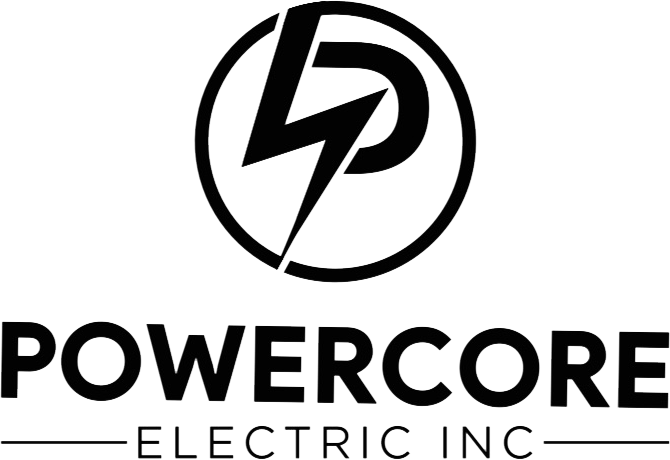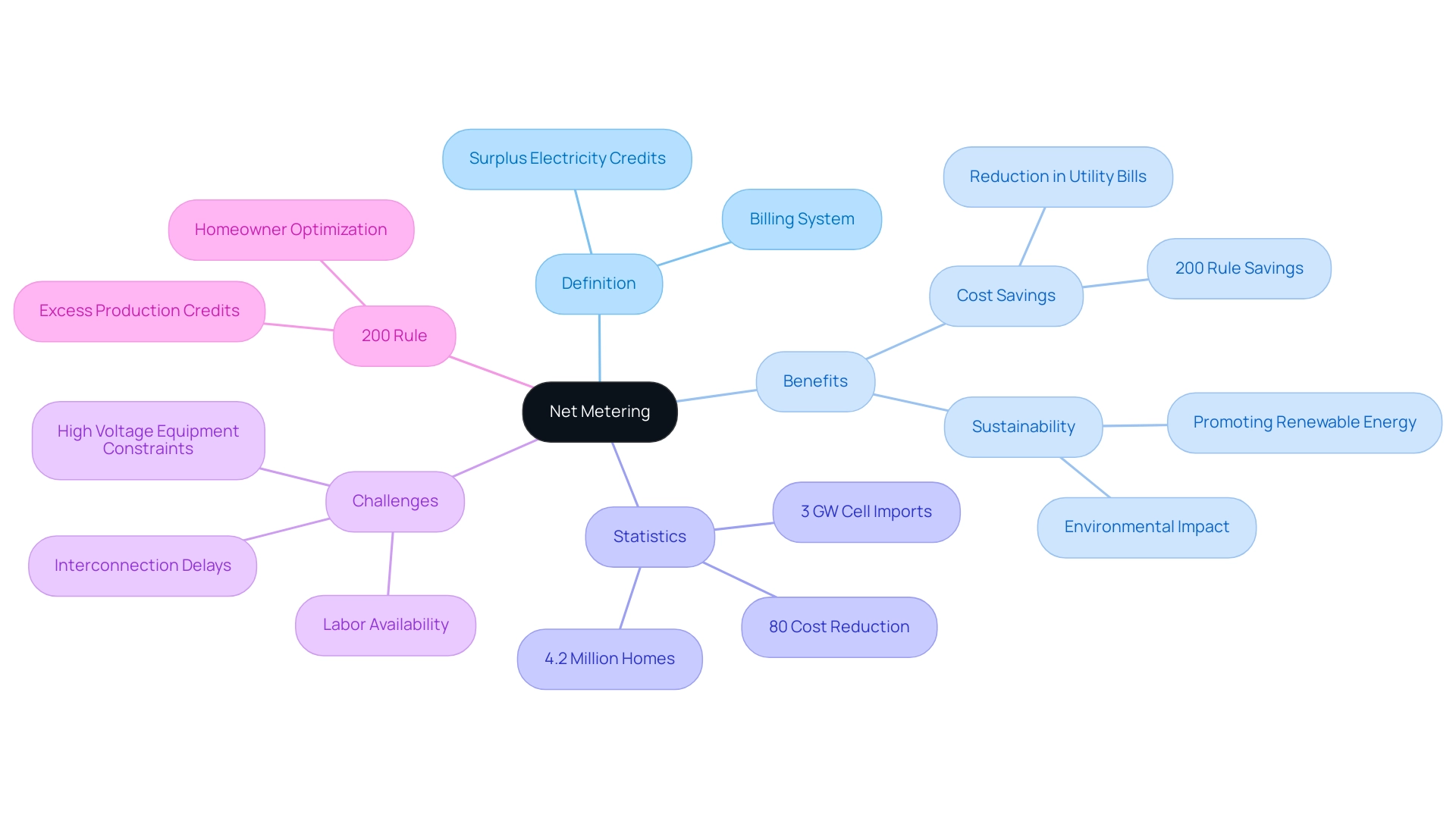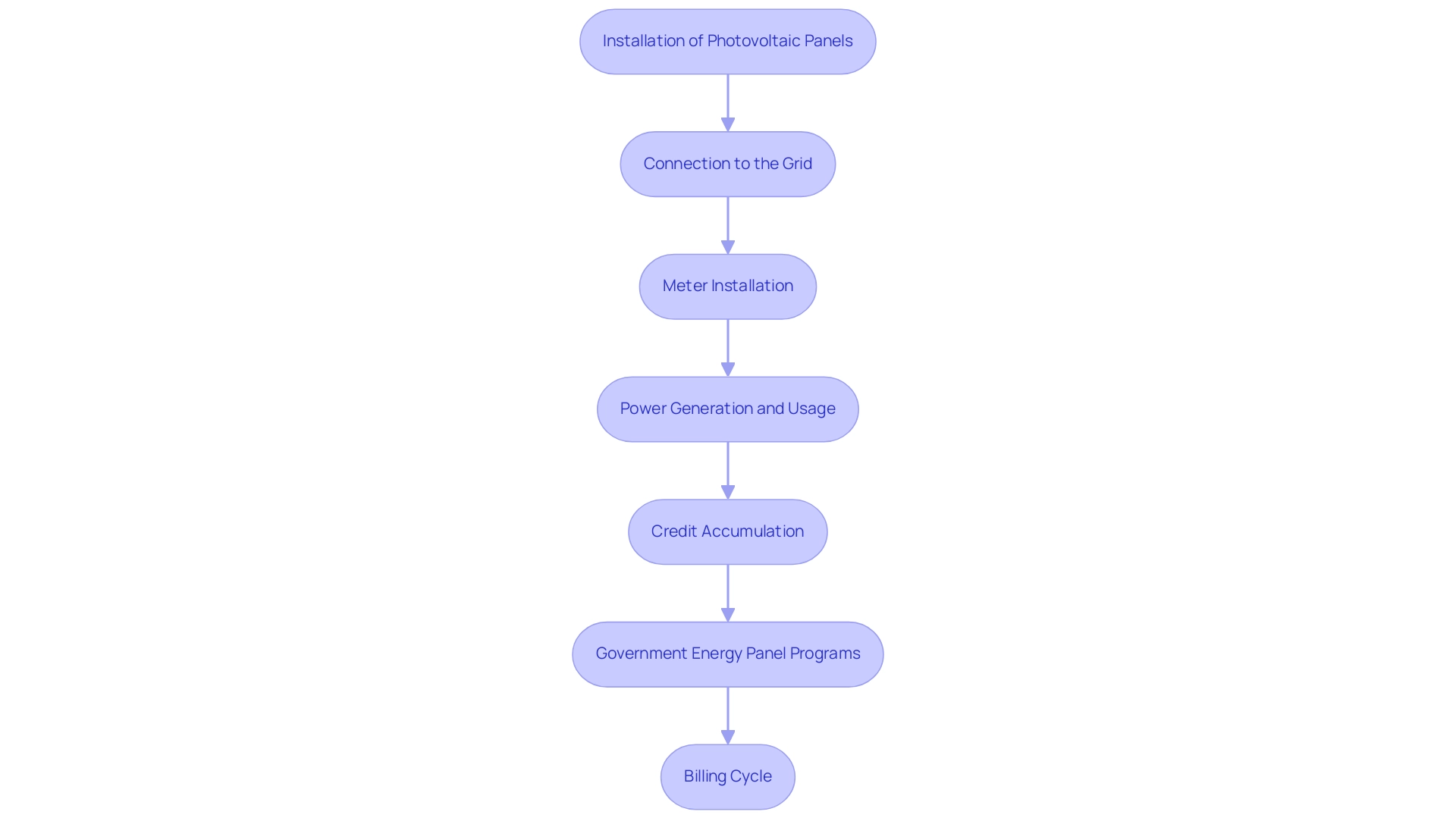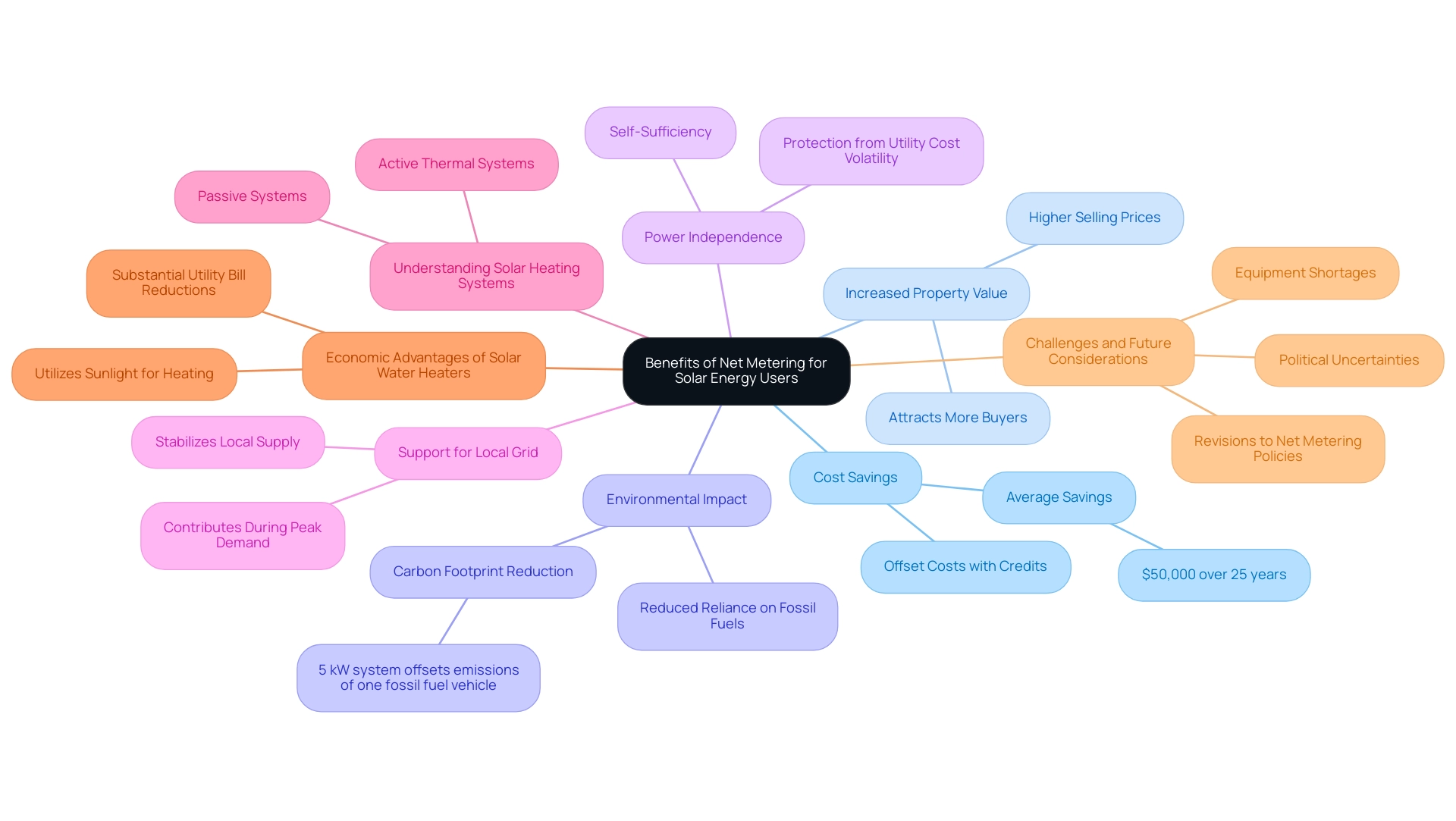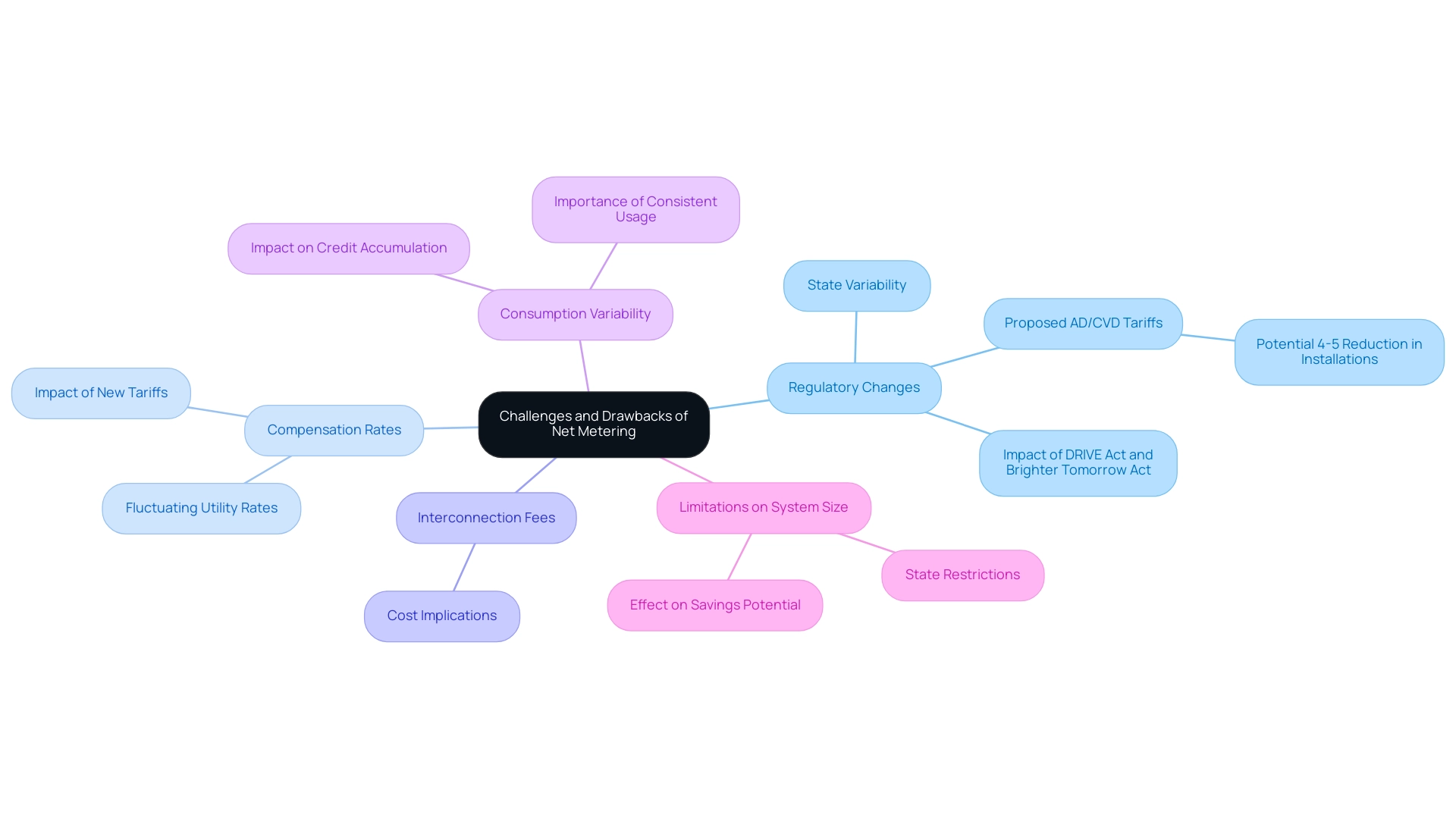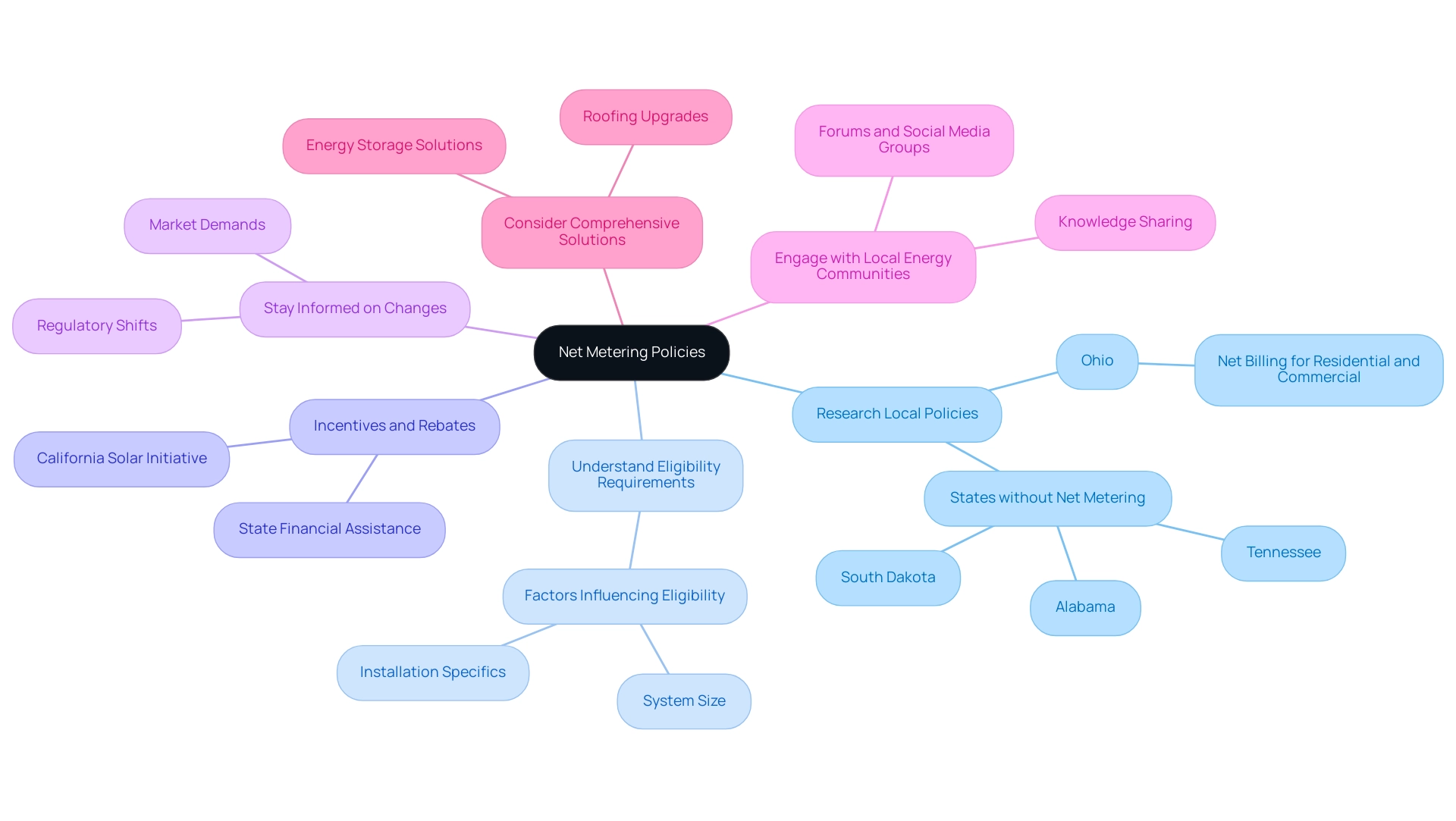Overview:
Net metering in solar systems is a billing arrangement that allows homeowners to earn credits for surplus electricity generated by their photovoltaic panels, which is fed back into the grid, ultimately reducing their utility costs. The article emphasizes the financial and environmental benefits of net metering, detailing how it enables homeowners to save significantly on electricity bills while promoting renewable energy adoption, despite facing challenges such as regulatory changes and varying compensation rates across states.
Introduction
As the world shifts towards renewable energy, homeowners are increasingly exploring the benefits that solar energy can bring to their lives and finances. One of the key concepts that can significantly enhance the value of a solar investment is net metering. This innovative billing system allows homeowners with solar panels to earn credits for the surplus electricity they generate and send back to the grid, ultimately reducing their energy costs.
With millions of solar-equipped homes across the United States and a growing emphasis on sustainability, understanding net metering is more important than ever. This article delves into the ins and outs of net metering, its advantages, challenges, and the varying policies across states, providing homeowners with the knowledge they need to make informed decisions about their solar energy systems.
Whether it’s maximizing savings or navigating regulatory changes, this guide aims to empower homeowners on their journey toward a greener future.
Understanding Net Metering: Definition and Importance
Net metering is a helpful billing system that allows homeowners with photovoltaic systems to earn credits for the surplus electricity they produce and return to the grid. Picture this: when your photovoltaic panels generate more power than your home requires, that excess electricity goes into the grid, and you receive credits on your utility bill in exchange. This is not merely a clever trick—it’s an essential aspect of optimizing the financial advantages of renewable resources!
By offsetting your costs, you’re not only saving money but also playing a key role in promoting a more sustainable future. With over 4.2 million homes utilizing renewable energy in the United States and a dramatic 80% reduction in installation costs since 2010, more homeowners are enjoying these benefits than ever before. For example, numerous homeowners in California have reported substantial savings under the 200% rule, which permits them to produce more electricity than they use and receive credits that can reduce their bills even more.
California’s recent building codes and NEM 3.0 have significantly transformed the landscape for renewable power adoption, creating new opportunities for homeowners in Northern California to capitalize on photovoltaic technology. Additionally, government panel programs provide financial incentives that further enhance these benefits, making renewable energy more accessible. However, it’s important to note that, according to a recent report from Wood Mackenzie:
- ‘Despite high demand for photovoltaic energy, we expect growth to remain flat in the next five years as the industry continues to be constrained by broader power sector challenges:
- a lack of labor availability,
- high voltage equipment constraints, and
- interconnection delays.’
This insight underscores the importance of understanding what is net metering in solar system, particularly as the industry navigates these challenges. Moreover, comprehending residential panel dimensions and their connection to the 200% rule can assist homeowners in optimizing the benefits of their systems. Understanding the appropriate size for your residence can greatly influence your savings and efficiency, ensuring you maximize your investment in renewable technology.
How Net Metering Works: A Step-by-Step Guide
-
Installation of Photovoltaic Panels: Start by placing photovoltaic panels on your roof, which capture sunlight and convert it into electricity, improving your home’s power efficiency.
-
Connection to the Grid: Your photovoltaic system connects to the local power grid, facilitating a two-way flow of power that allows you to draw electricity and send surplus back.
-
Meter Installation: A net meter is then installed to monitor what is net metering in solar system, including your power usage from the grid and the surplus electricity your system exports. This meter is essential for comprehending what is net metering in solar system.
-
Power Generation and Usage: On sunny days, your solar panels may produce more power than you require. The surplus is redirected to the grid, benefiting both you and your community.
-
Credit Accumulation: For every kilowatt-hour (kWh) of power you send back, you earn credits that help offset your utility bill. This process not only saves you money but also encourages the use of renewable resources. Significantly, the existing photovoltaic capacity in the US is 219.8 GW, supporting over 279,447 jobs and emphasizing the increasing economic influence of renewable power.
-
Government Energy Panel Programs: Homeowners can take advantage of various government energy panel programs that offer incentives, rebates, and tax credits to reduce the initial installation costs. These programs vary by state, so it’s crucial to research local offerings to maximize your savings.
-
Billing Cycle: At the conclusion of each billing period, your utility company computes your total utility credits and debits, leading to a final bill that frequently shows considerable savings. With solar PV costs dropping by 37% over the past ten years, many homeowners are curious about what is net metering in solar system, making it an appealing motivation to embrace solar power. It’s important to note that net billing policies differ by state, with various rules on how surplus power is managed, influenced by recent legislative developments like the Inflation Reduction Act. This evolving landscape emphasizes the need for homeowners to stay informed about their local policies and government programs for optimal savings and sustainability.
The Benefits of Net Metering for Solar Energy Users
-
Cost Savings: One of the biggest perks of understanding what is net metering in solar system is the potential for significant savings on your electricity bills. By enabling you to offset your costs with credits earned from generating surplus power, homeowners can observe a significant change in their monthly expenses. Research indicates that the average U.S. homeowner stands to save around $50,000 over 25 years after installing photovoltaic panels, though individual savings may vary depending on local electricity costs and state policies in 2024.
-
Increased Property Value: Installing energy systems not only benefits your wallet but can also enhance your home’s value. Properties fitted with photovoltaic panels often attract more buyers and command higher prices, making them appealing investments. Real estate studies indicate that homes with renewable energy systems can lead to a noticeable increase in property value, making it a win-win for homeowners looking to sell.
-
Environmental Impact: Harnessing sunlight is a move towards a more pristine planet. By reducing your reliance on fossil fuels, you’re actively contributing to a sustainable future. For instance, installing a 5 kW solar panel system can offset the emissions produced by one fossil fuel vehicle in a year, showcasing how your choice can help lower carbon footprints in your community.
-
Power Independence: By understanding what is net metering in solar system, you can attain greater power independence through generating your own electricity. This self-sufficiency shields you from the volatility of rising utility costs and enhances your home’s resilience against fluctuations in the market.
-
Support for Local Grid: By returning surplus power to the grid, you play a critical role in stabilizing the local supply. This is especially crucial during peak demand periods when resources can be stretched thin. Your contribution not only supports the grid but also helps promote a more sustainable energy landscape for everyone.
-
Understanding Solar Heating Systems: It’s essential to recognize the varieties of heating systems available. Active thermal heating systems use mechanical devices to collect and distribute heat, providing consistent heating. In contrast, passive systems utilize building design to naturally capture and retain heat, offering a simpler and often more cost-effective solution. Both systems can significantly contribute to savings and efficiency.
-
Economic Advantages of Solar Water Heaters: Solar water heaters are particularly beneficial for homeowners, as they can lead to substantial reductions in utility bills. By utilizing sunlight for water heating, households can save on traditional energy expenses, further enhancing the financial advantages of this renewable energy.
-
Challenges and Future Considerations: Despite the numerous advantages of what is net metering in solar system, the renewable energy sector currently faces challenges such as equipment shortages and political uncertainties that could impact its growth. As we near 2024, numerous states and nations are expected to adjust their net policies, possibly affecting the financial advantages accessible to homeowners. Staying informed about these changes is crucial for making the best decisions regarding energy investments.
Challenges and Drawbacks of Net Metering
Navigating the realm of what is net metering in solar system can feel daunting, particularly with the recent alterations in regulations that can influence your renewable energy investment. Here’s what you need to know:
- Regulatory Changes: Understanding what is net metering in solar system policies is essential, as they are not one-size-fits-all; they vary by state and can change over time.
For example, legislation such as the DRIVE Act and Brighter Tomorrow Act is currently influencing Maryland’s power landscape, demonstrating how local regulations can directly impact your financial returns on renewable investments. Additionally, the proposed antidumping and countervailing duties (AD/CVD) on imports of crystalline silicon solar cells and modules from Southeast Asia may pose challenges for the solar market, potentially leading to a 4-5% reduction in installations in distributed solar segments.
- Compensation Rates: Keep an eye on your utility’s compensation rates for surplus power.
Some utilities are lowering these rates, meaning your overall savings could take a hit. In fact, the average compensation for excess energy can fluctuate, impacting your wallet more than you might expect. As Wood Mackenzie noted, the potential new tariffs could reduce growth projections for the renewable energy market, further complicating compensation rates.
- Interconnection Fees: Don’t forget about the costs associated with connecting your solar system to the grid.
These interconnection fees can cut into your initial investment returns, so it’s wise to factor them into your budgeting.
- Consumption Variability: If your household power usage tends to vary, it could influence the quantity of credits you gather through net billing.
Consistent power usage can lead to more predictable savings, so consider how your habits might influence this.
- Limitations on System Size: Be aware that some states impose restrictions on the dimensions of energy systems that qualify for net accounting.
These limitations can restrict your potential savings and affect the overall viability of your setup.
By understanding these challenges and remaining informed about what is net metering in solar system policies, especially considering the recent drop in the residential renewable market (1,132 MW added in Q2 2024, a 37% year-over-year decrease), you can make more assured choices regarding your investment in renewable resources.
Net Metering Policies: What You Need to Know by State
-
Research Local Policies: Begin your journey by checking your state’s public utility commission website. This resource offers the latest policies and regulations on what is net metering in solar system specific to your area. For instance, in Ohio, both residential and commercial energy system owners can benefit from net billing, earning credits for any excess energy generated at retail prices. It’s essential to observe that only Alabama, South Dakota, and Tennessee presently do not provide net billing or remuneration for surplus generation, which is crucial for understanding what is net metering in solar system when assessing your choices.
-
Understand Eligibility Requirements: Keep in mind that net billing eligibility can differ from state to state. Various factors, including system size and installation specifics, can influence your qualifications. Getting acquainted with these criteria is essential before making any investments in renewable energy.
-
Incentives and Rebates: Explore the state incentives or rebates available to enhance the advantages of net billing. Many states are increasingly offering financial assistance or tax credits that can significantly reduce your solar installation costs and improve your return on investment. For instance, California offers a variety of incentives, such as the California Solar Initiative, which can help offset installation expenses.
-
Stay Informed on Changes: Remember that what is net metering in solar system can change over time due to regulatory shifts and market demands. As noted by Autumn Proudlove, Managing Director – Policy & Markets at NCCETC, “During 2024, we continued to see states move away from traditional net metering in solar system and toward alternative compensation structures, like net billing, for distributed generation, raising questions about what is net metering in solar system.” Monitoring these updates will enable you to adjust your energy strategy for maximum benefits.
-
Engage with Local Energy Communities: Connect with local energy communities through forums or social media groups. Interacting with other eco-conscious homeowners can provide valuable insights and firsthand experiences, helping you in managing the complexities of net usage. Sharing knowledge within these communities fosters a supportive network that empowers you on your solar journey.
-
Consider Comprehensive Solutions: In addition to net metering, explore services that can further enhance your home’s efficiency and protection. Investing in energy storage solutions allows you to store excess energy for later use, while upgrading your roofing can protect your home and improve energy efficiency. Together, these strategies can maximize your solar investment and contribute to a sustainable lifestyle.
Conclusion
Understanding net metering is essential for homeowners looking to maximize their solar energy investment. This innovative billing system not only helps reduce energy costs by allowing homeowners to earn credits for surplus electricity sent back to the grid but also contributes to a more sustainable energy future. With significant benefits like cost savings, increased property value, and environmental impact, net metering presents a compelling case for adopting solar energy.
While the advantages are clear, navigating the complexities of net metering policies and potential challenges is crucial. Homeowners must stay informed about local regulations, compensation rates, and any changes that could affect their savings. Engaging with local solar communities and researching state-specific incentives can provide valuable insights and support on this journey.
Ultimately, leveraging net metering can lead to a greener and more financially sound future. By embracing solar energy and understanding the intricacies of net metering, homeowners can not only enhance their quality of life but also play a vital role in promoting a sustainable energy landscape for generations to come.
